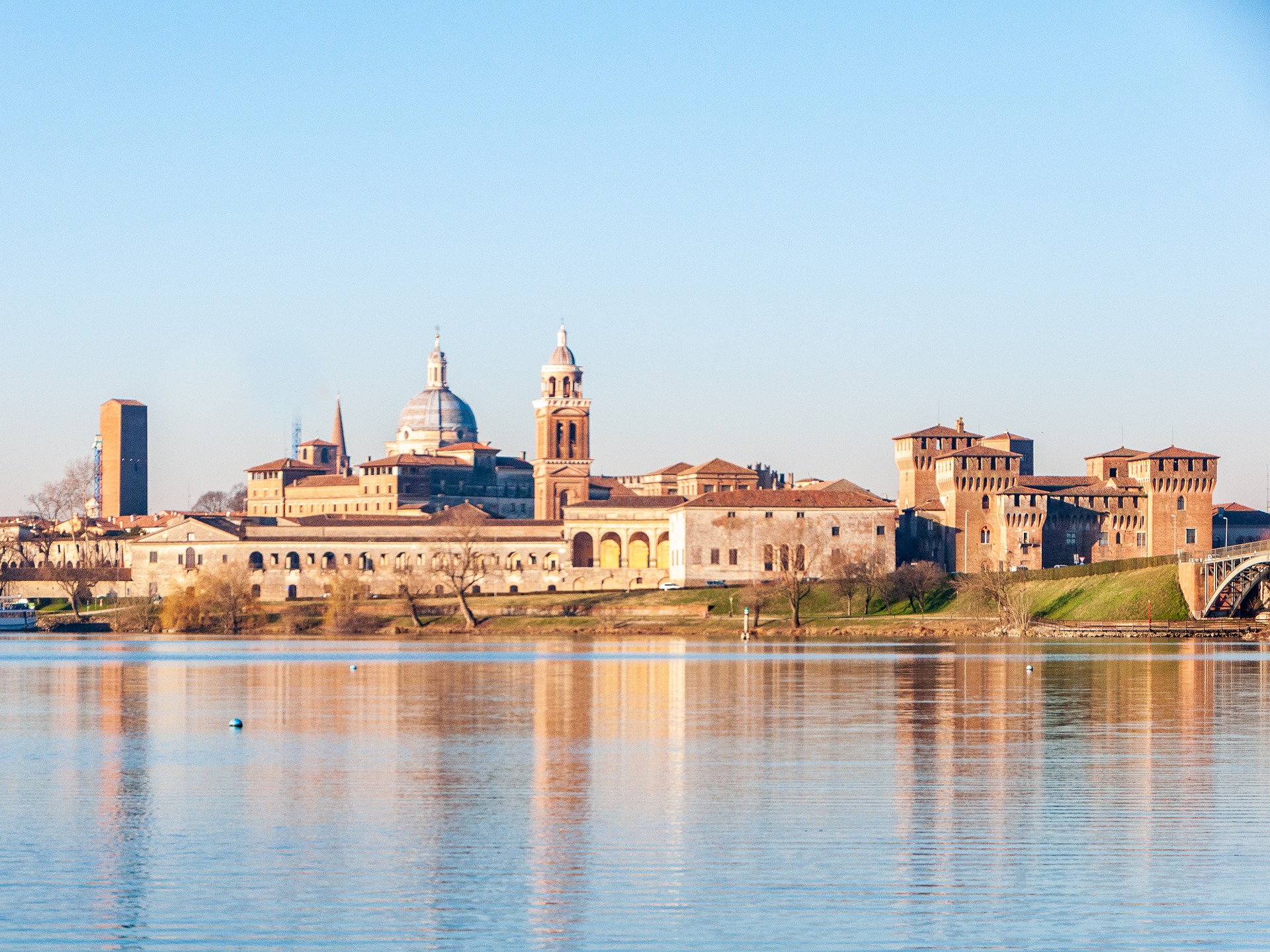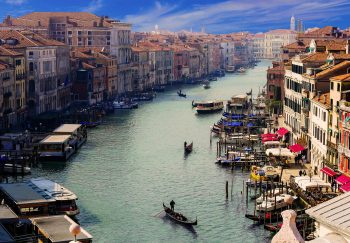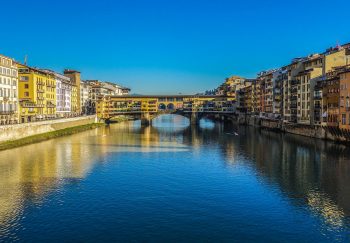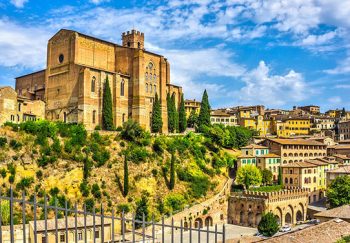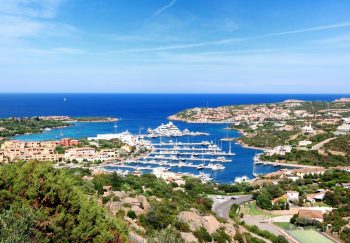Mantua, a small medieval city, is rich in history and architectural beauty. It also boasts a delicious culinary scene.
It is considered one of the most important cultural and artistic hubs in Northern Italy. The Centro Storico (or historical city center) and Sabbioneta are part of a stunning UNESCO World Heritage Site.
Mantua’s prestige is due to the Gonzaga family, a powerful and wealthy family that ruled the city for almost four centuries. Their patronage brought some of the most talented artists, musicians, writers, and authors to Mantua. But regardless of who paid the bills, Mantua always seemed to have something in its water that inspires artists and musicians. Virgil, a Roman poet, was born near the town. It was the setting for Giuseppe Verdi’s Opera, Rigoletto. Romeo is also exiled in Romeo and Juliet. While working in Mantua during the 18th century, Antonio Vivaldi composed many of his most renowned operas and concerti. Mantua was also home to Andrea Mantegna, a Renaissance artist best known for his Lamentation Over the Dead Christ – a shocking image of Christ as a corpse from an unusual angle.
Mantua, although it is close to Venice and Milan, and neighbor to Verona is often overlooked by tourists. It is unlikely to stay this way for too long. Mantua was named the Italian Capital of Culture in 2016 and the European Capital of Gastronomy in 2017. We recommend you see it sooner than later.
What is?
Palazzo Ducale
Many of Mantua’s wealth and culture are rooted in the Gonzagas era, when it was ruled over by one of Europe’s most powerful families during the Middle Ages. The Palazzo Ducale is their main residence in the historic center of the city. The castle is larger than seven football fields and contains over 500 rooms. Many of these rooms are also open to the public. Mantegna’s Camera degli Sposi (or Wedding Room) is a must-see.
Piazza Sordello
Piazza Sordello, Mantua’s historic city center is considered the oldest square. The piazza is believed to have been the central point of the Etruscan city. It’s beauty today is due to, you guessed right, the Gonzagas who redesigned it and built its most prominent buildings. The Palazzo Ducale is the city’s Duomo and Torre della Gabbia are both here. This tower has a cage that hangs from it, where criminals and delinquents once were held. Fun fact: The piazza is dedicated the poet Sordello Da Goito, who was mentioned by Dante in his Divine Comedy.
Palazzo Te
The Palazzo Te (or Palazzo del Te) was built in 1525 to 1535 as a suburb residence for Federico 2 Gonzaga. The palace was initially intended to serve as a stable for the ruler. However, it became a luxurious office space and guest palace for foreign rulers. The famous Room of the Giants is a magnificent fresco depicting the battle between the giants that attempted to climb to Olympia and overthrow Zeus.
Astronomical Clock Tower
Mantua’s clock tower, an astronomical clock, was constructed in 1473. It was one of the earliest mechanical clocks in Europe. This ancient clock not only showed the hour, but also indicated the position of the moon, sun, planets and celestial equator. Astrology wasn’t just for women’s monthly magazines in the 15th century. It was a major governing force in daily life. A clock that accurately communicated it to the masses must have been almost miraculous to all who saw it. Although it no longer works, Mantua’s residents once used the clock as a guide to all aspects of their lives. The clock showed when to plant, harvest and depart on a trip. It also told them when to get married.
Teatro Bibiena
The Bibiena Theatre was built entirely out of wood in 1767. While the auditorium’s distinctive bell shape today seems unusual, it was common in the 18th century. Antonio Bibiena, its creator, wanted the theater to be able to host concerts and plays as well as scientific experiments. This was something that was even more remarkable at the time. Inside, velvet and stucco are used to decorate. This unique layout allows theatergoers to be seen and heard. Although the theater hosts both evening and daytime shows, its most well-known performer is probably Wolfgang Amadeus Mozart, a teenager who performed here in 1769.
Sabbioneta
Sabbioneta, Mantua’s UNESCO World Heritage Site is a small, well preserved town that was built by a Gonzaga to serve as a residence and fortress. It is located about an hour from Mantua and well worth the side trip. The town is UNESCO’s “perfect example” of Renaissance urban planning. Visit the Ducal Palace, Teatro all’antica, and beautiful gardens and rooms of the Palazzo Giardino. Enjoy some of the best local cuisines while you’re here. (Learn more below!)
Mantua’s churches
Mantua, like any other ancient Italian city, has many churches, chapels, and cathedrals that you can visit while you’re there. You’ll find St. Peter the Apostle Cathedral at Piazza Sordello. Officially the Duomo of the city, the cathedral is a ruin of the glory of the secondary Basilica di Sant’Andrea . This magnificent church houses the vial of the blood of Christ, a Catholic relic that draws thousands of pilgrims every year to the feast of the Ascension.
Be sure to stop by the Rotonda Di San Lorenzo , Mantua’s oldest church. It was built in 1082. Piazza delle Erbe is the place to be to see the stunning basilica. It contains Byzantine frescos and the original matroneum (or gallery specifically designed to accommodate women during religious events). The church is now deconsecrated, and it is often used to host demonstrations, shops or pop-up shops.
What to Eat
Mantua, like all other places in Italy has its own unique culinary traditions and dishes. Three sides surround the city with artificial lakes that are fed by the Mincio River (originally used as a defense against intruders). Mantua’s cuisine reflects this abundance of water. It has dishes featuring freshwater fish, frogs, and a love for water-intensive produce like rice and pumpkins.
Bigoli con le Sardelle
Bigoli pasta is a type of pasta that’s very similar to spaghetti but is made fresh. You can make a delicious, simple meal out of it by adding anchovies, sardines (sardelle), garlic, and oil. This dish was traditionally eaten on the first day or week of Lent. However, it can be enjoyed all year.
Pumpkin Tortelli
Tortelli di Zucca alla Mantovana are small tortelli made from fresh egg pasta. They’re filled with Parmesan cheese and nutmeg. The pumpkin’s sweetness and saltiness combine perfectly to make this one of our top fall recipes in northern Italy.
Risotto alla pilota
Mantua’s Risotto alla Pilota is named after the workers who used the rice to clean and husk. It’s a more grainy version of traditional Italian risotto and is topped with sausage, pork and Parmesan cheese. A Mantuan favourite!
Stracotto for donkeys or horses
Mantua is not unusual to see donkey (asino), or horse (cavallo), on the menu. Stracotto, which means super-cooked, is the preferred method of cooking tougher meats. This involves simmering in wine or broth for long periods. It is usually served with bright yellow polenta.
Cotechino
Although all kinds of sausages are very popular in Mantua but cotechino is the most popular. The Italian government has granted it Protected Geographical Indication status. Cotechino is a simple, hearty dish that is made with bacon, rind and other seasonings. It is typically served with lentils to mark the new year.
Desserts
Mantua is a must-try for anyone who loves sweets. Torta sbrisolona, a crumbly cake, is made with butter, eggs and vanilla seeds. To avoid it from rolling on your knife and fork, the cake is best broken up and eaten with your hands. Elvezia cakes are richer. This dessert is made up of three layers of almond paste, sugar and egg white.
What should I do
Mantua hosts the Festivaletteratura, an annual five-day international literature festival that “encounters workshops, thematic trips, concerts and events [with world-renowned poets, authors, essayists and scientists from all walks of the globe].” The Festival 2017 runs from September 6 to 10.
The Po River’s tributaries form lakes that surround the city. Enjoy the natural beauty of the area by renting a bicycle or taking a boat tour. It is completely flat, and the scenery is breathtaking. Take the 20-km trip to the Bosca Fontana Natural Reserve starting from Mantua.
What Do You Need Before You Go
Mantua is situated in the most flattened part of Lombardy’s vast plain. It is known for its rice and pumpkin production. If you prefer a mild climate with clear days, then this is the best time to visit.
It is easy to see the town on a day trip from Bologna or Milan, Verona, Verona, or Venice. You can rent a bicycle or just walk across the cobblestones to see what’s around the center.
If our Insiders Guide to Mantua was helpful, we recommend you check out our other Insiders Guides: The Tuscany Guide, The Amalfi Coast Guide and Outdoor Adventures Guide.
